Recently updated on March 4th, 2025 at 12:57 pm
Did you know that the Irish often refer to Giant’s Causeway as the 8th Wonder of the World? For more captivating Giant’s Causeway facts, including those conceived by the Irish imagination, step into the myths and legends, the stories and science of this natural phenomenon.
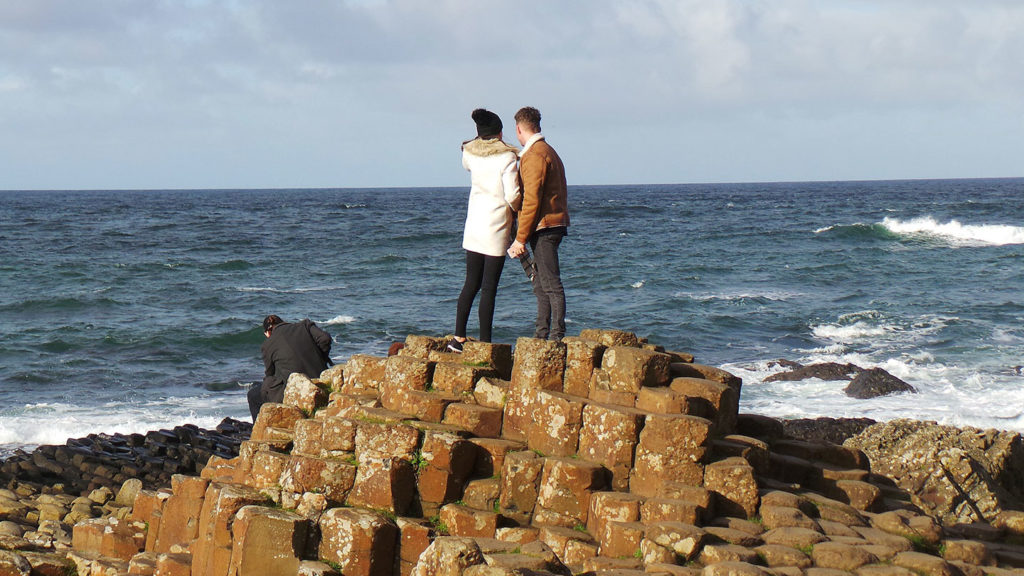

Giant’s Causeway facts – everything you need to know
Giant’s Causeway may look like it was carved by human hands, but Mother Nature is entirely responsible.
The sight is surreal, to say the least. Some 40000 basalt rock columns step out of the icy sea and on to the coast of Antrim, Northern Ireland. Several of the columns protrude almost 12 metres (39 feet) into the air. They also span an incredible distance of 6km (four miles).
Giant’s Causeway scientific origins
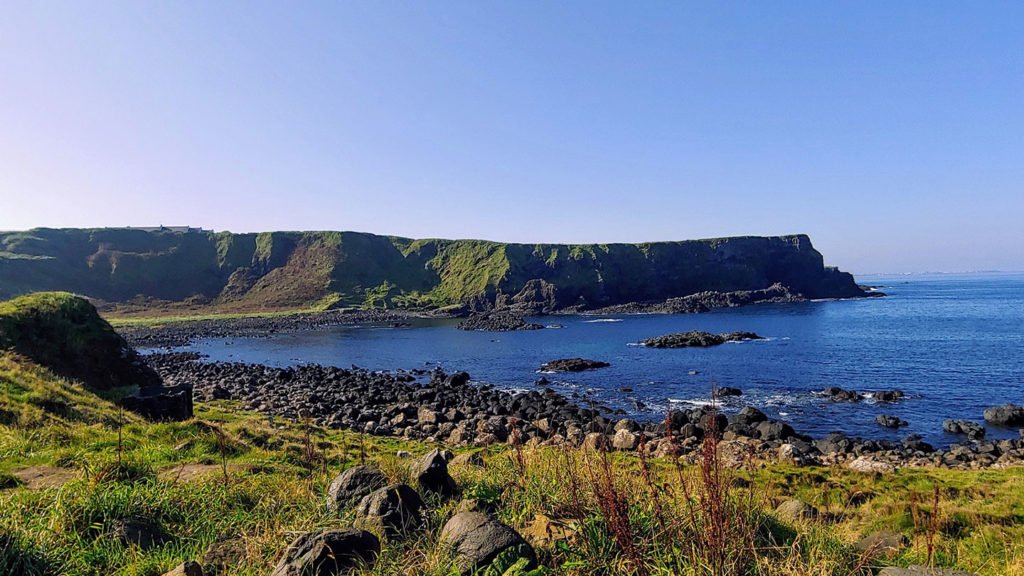

Intense volcanic activity over 50 million years ago is the scientific explanation for the origins of Giant’s Causeway. Molten rock forced its way through the earth. Later, it cooled at different temperatures on the earth’s surface. As a result of the variation in temperature, the rock took on strange, otherworldly shapes, which has further been influenced by subsequent erosion over the years.
And here are the (much more entertaining) mythical explanations


Why stick to the facts when folklore offers a far more entertaining explanation? In a land brimming with leprechauns and legends, the Irish have, of course, come up with their own whimsical alternatives to science.
Local legend tells the story of the giant, Finn McCool, (also known as Fionn mac Cumhaill) who is said to have had a fight with a Scottish fellow, named Benandonner, across the sea. The rabid Finn grabbed huge rocks and hurled them into the water, forming a trail of stepping stones. After spotting his rival, however, Finn realised he wasn’t quite up to size, even for a giant.
Not to be outdone, Finn’s wife ‘disguised’ the giant as her baby. Once he caught sight of the oversized infant, Benandonner made a hasty retreat back to Scotland. As he dashed across the causeway, the bits of rock crumbled, and so Giant’s Causeway was spawned.
Another version involves affairs of the heart. The same Finn fell head over heels with a love interest across the seas. He built his causeway in a desperate attempt to lure her to Ireland.
RELATED CONTENT: A Brief History of Leprechauns, Ireland’s Trickster Fairies
Giant’s Causeway is over 50 million years old
Scientists estimate that the volcanic activity that caused the Giant’s Causeway took place between 50 to 60 million years ago.
A global natural wonder
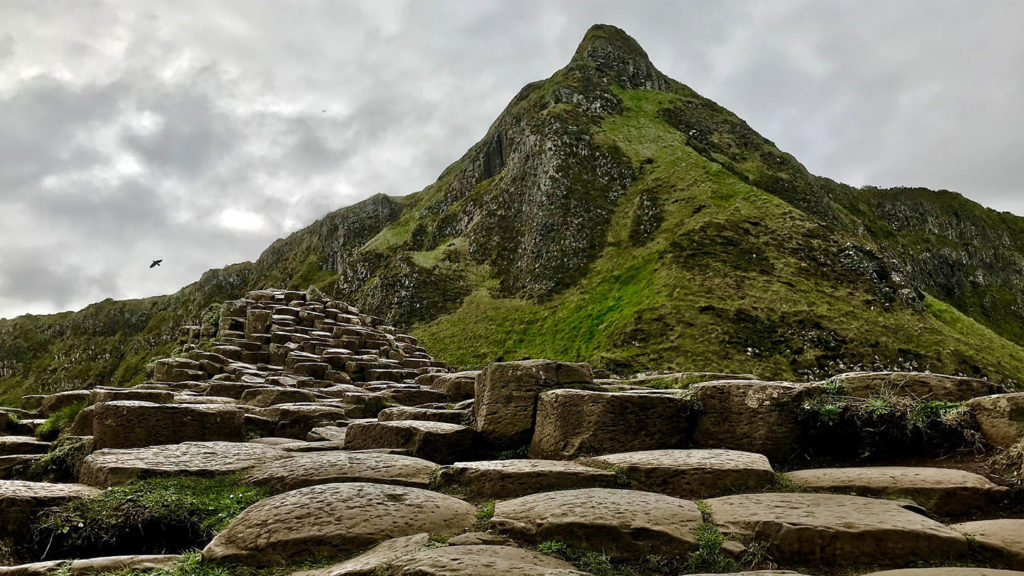

Giant’s Causeway was declared a UNESCO World Heritage Site in 1986 and regularly features on many global “best of the best” lists. Earlier, in 2017, it was declared the “UK Best Heritage attraction”.
This quirky natural phenomenon is the most popular attraction in Northern Ireland, welcoming millions of visitors annually. It’s a must for every traveller making the trip to the Emerald Isle.
And if you do embark on a Giant’s Causeway tour, our top tip is not to miss the architecturally magnificent Giant’s Causeway Visitor Centre, which offers audio guides in 10 languages.
In the footsteps of the Game of Thrones


Although the Game of Thrones series never featured Giant’s Causeway itself, many scenes were filmed in areas surrounding this natural wonder. The entire region has benefited from Game of Thrones fever and welcomed a massive spike in visitors. Serious fans of the blockbuster series eager to tread in the footsteps of their favourite characters, still choose to join a Giant’s Causeway tour to see the natural phenomenon.
GET INSPIRED BY: Amazing Ireland
Step into the shoes of birdwatchers
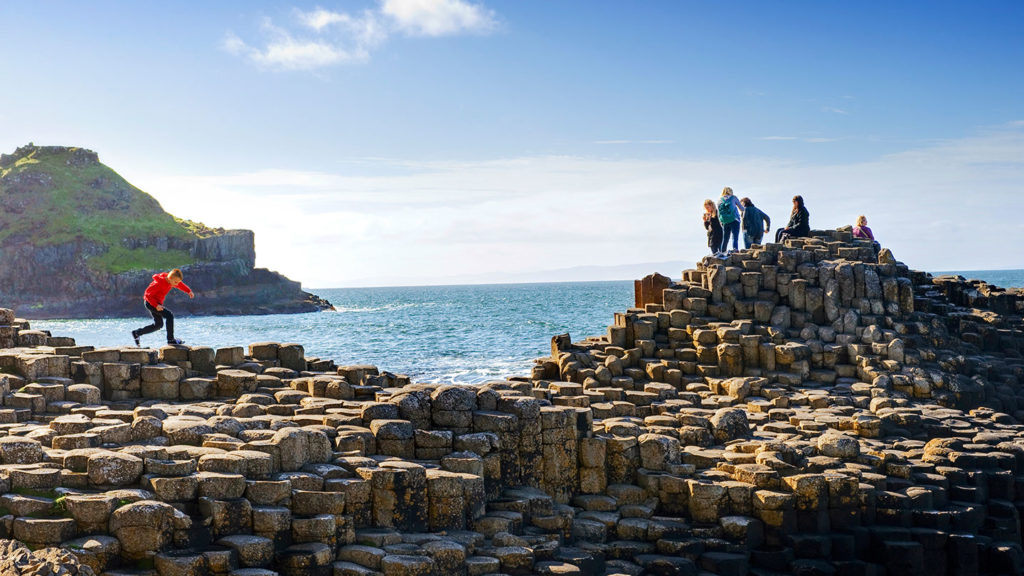

Birdwatchers also flock to the area, but for something other than the giant stepping stones.
As a national nature reserve, Giant’s Causeway is home to an impressive array of bird species including petrel, cormorant and fulmar.
Not into birds? Keep your eagle-eyes focussed on the rocks and marvel at sea anemones, starfish, limpets, the oyster plant and even orb spiders.
No column is the same
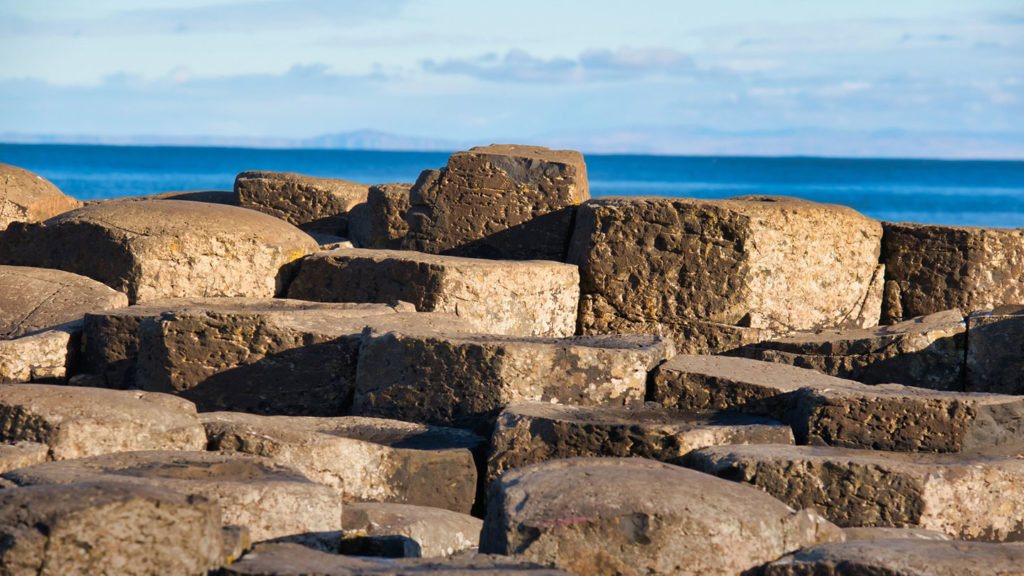

For millions of years, dramatic weather has battered these peculiar rocks. The result? Not one is the same. Many columns are hexagonal, while others have four, five, seven or even eight sides. The Irish imagination is fertile, as you know. Consequently, the locals have come up with some fairly unusual names for the quirkiest rocks.
See if you can spot the ‘Giant’s Eyes’, for example. These are the reddish, low columns. Then, scan the stones for the ‘Shepherd’s Steps’, the ‘Giant’s Harp’, the ‘Giant’s Gate’, the ‘Camel’s Hump’ and the ‘Chimney Stacks’.
Whether you choose to believe the stories or the science, Giant’s Causeway enchants young and old. It’s impossible not to return home believing in legends and magic. After all, isn’t that what travel’s all about?
Have you discovered any Giant’s Causeway facts you’d like to share? Have you ever been on a Giant’s Causeway tour? We’d love to hear your Giant’s Causeway stories in our comments below…